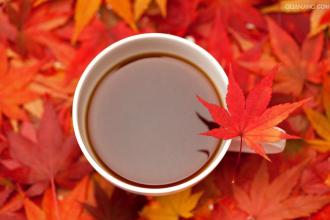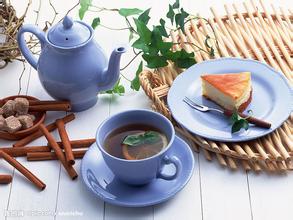Introduction to the flavor and taste characteristics of Tanzania coffee manor with unique cocoa fruit aroma
The coffee beans are of extraordinary quality and are produced in the Mohi district near Mount Kilimanjaro. The mountain area with a height of 3,000 to 6,000 feet is the most suitable area for growing coffee. Fertile volcanic ash gives the coffee here a strong texture and soft acidity. It exudes delicate aromas and contains aromas of wine and fruit, making people taste endless aftertaste. After drinking Kilimanjaro coffee, I always feel a soft and mellow smell of soil around my mouth. Coffee gourmets often use words such as "wild" or "wild" to describe it. It can be said that pure Kilimanjaro coffee is "the most African coffee." Tanzania's main coffee producing area is located at the foot of Mount Kilimanjaro, which is rich in volcanic soil. Some coffee trees planted here are more than 100 years old. The earliest coffee was first introduced by Christians from Kenya to grow coffee. Coffee trees must be carefully taken care of, weeded and fertilized. It is also necessary to cut off old branches so that new ones can grow to maintain the quality of coffee beans, which are well equipped; coffee beans are an important economic crop in Tanzania, and the local government attaches great importance to the industry Kilikmanjaro Coffee, which is produced in Mount Mount Kilimanjaro, the highest mountain in Africa in northeastern Tanzania. Its coffee is of good quality, rich aroma and outstanding sour taste, so it is suitable for the preparation of comprehensive coffee. Kilimanjaro coffee is an important lifeline of the Tanzanian economy. About 17% of the foreign exchange is generated by coffee. It is mainly produced around MountKilimanjaro near Arusha in the northeast, that is, Mount Kilimanjaro, the highest peak in Africa with perennial snow. And Kilimanjaro coffee, one of the top representatives of Tanzania AA coffee beans, bred by volcanic ash, nature's achievement of beans, coffee with a unique cocoa aroma, a strong glycolic Kilimanjaro coffee (Kilikmanjaro Coffee) produced in northeastern Tanzania, the highest mountain in Africa Kilimanjaro (Mount Kilimanjaro). Its coffee is of good quality, rich aroma and outstanding sour taste, so it is suitable for the preparation of comprehensive coffee. Kilimanjaro coffee is an important lifeline of the Tanzanian economy. About 17% of the foreign exchange is generated by coffee. It is mainly produced around MountKilimanjaro near Arusha in the northeast, that is, Mount Kilimanjaro, the highest peak in Africa with perennial snow. Kilimanjaro coffee, one of the top representatives of AA coffee beans in Tanzania, is bred by volcanic ash and made by nature. The coffee has unique cocoa aroma and strong glycolic acid raw beans: raw beans are unbaked beans, which contain 11.5% fat; 11.5% moisture; 28.6% crude fiber; 4.0% minerals; 6.2% tannins; and 1.3% caffeine. Essence 17.0%; sugar 8.1%; protein 11.8%.
Baked beans: baked beans containing 13.0% fat; 1.5% caffeine; 29.5% crude fiber; 2.6% moisture; 5.0% minerals; 4.2% tannic acid; 29.4% essence; 2.0% sugar; 12.8% protein.

Important Notice :
前街咖啡 FrontStreet Coffee has moved to new addredd:
FrontStreet Coffee Address: 315,Donghua East Road,GuangZhou
Tel:020 38364473
- Prev

Introduction to the characteristics of high-quality coffee beans in the manor area of Jamaica Blue Mountain Coffee with almond flavor
Only coffee grown in the Blue Mountain area above 2000 feet above sea level can be called Blue Mountain Coffee. Coffee beans from lower mountain areas can only be called Jamaican alpine coffee. The same coffee tree species, whether planted anywhere in Hawaii or Kenya with a similar climate, can not produce the unique flavor of blue mountain coffee beans, the unique flavor of blue mountain coffee and its unique geographical location and
- Next

Round Indonesian civet coffee Kopi Luwak flavor and taste characteristics of boutique coffee
Kopi Luwak is made in Indonesia. In the early 18th century, the Dutch established coffee plantations in the Indonesian colonies of Sumatra and Java, and banned locals from picking and eating their own coffee fruits. Indonesian locals inadvertently found that civets love to eat these coffee fruits and will drain the beans intact when defecating. The civet can only pick the most familiar.
Related
- Detailed explanation of Jadeite planting Land in Panamanian Jadeite Manor introduction to the grading system of Jadeite competitive bidding, Red bid, Green bid and Rose Summer
- Story of Coffee planting in Brenka region of Costa Rica Stonehenge Manor anaerobic heavy honey treatment of flavor mouth
- What's on the barrel of Blue Mountain Coffee beans?
- Can American coffee also pull flowers? How to use hot American style to pull out a good-looking pattern?
- Can you make a cold extract with coffee beans? What is the right proportion for cold-extracted coffee formula?
- Indonesian PWN Gold Mandrine Coffee Origin Features Flavor How to Chong? Mandolin coffee is American.
- A brief introduction to the flavor characteristics of Brazilian yellow bourbon coffee beans
- What is the effect of different water quality on the flavor of cold-extracted coffee? What kind of water is best for brewing coffee?
- Why do you think of Rose Summer whenever you mention Panamanian coffee?
- Introduction to the characteristics of authentic blue mountain coffee bean producing areas? What is the CIB Coffee Authority in Jamaica?

